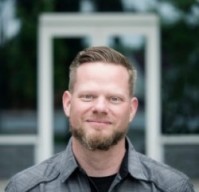 22% of children in the USA under the age of 18 are living in poverty. Yet, when I hear the Church talking about young people I don’t hear us talking about poverty rates. I only hear us talking about post-confirmation retention rates. Isn’t this a little short-sighted? Where are the boundaries or limits to our call? Are those of us in children, youth and family ministry only charged with the faith formation of young people?
22% of children in the USA under the age of 18 are living in poverty. Yet, when I hear the Church talking about young people I don’t hear us talking about poverty rates. I only hear us talking about post-confirmation retention rates. Isn’t this a little short-sighted? Where are the boundaries or limits to our call? Are those of us in children, youth and family ministry only charged with the faith formation of young people?
No. We don’t think about the human dualistically (spiritual self is separate from the physical self); therefore we have a holistic responsibility for each and every young person. Our work of discerning, interpreting and proclaiming Christ’s presence in the lives of our young people is holistic. We are as concerned with and as engaged in the poverty rates as the post-confirmation retention rates.
Urie Bronfenbrenner is a psychologist who developed the bio-ecological systems theory of human development. His theory is not rocket science to those of us who work with kids regularly, but it is extremely helpful and often overlooked. This theory basically states that you cannot fully understand – or benefit – the young person without taking that young person’s context into consideration. There are multiple variables affecting the well-being of our children and youth.
First, there is the Biological level – the child’s physical self. Her biological makeup and behavioral characteristics influence her development.
Second, there is what Bronfenbrenner calls the Microsystem which would be the space(s) actually occupied by a kid. So, her classroom, her home, her congregational youth group would all be Microsystems. These Microsystems affect her development AND her physical self will either promote or hinder interactions with her Microsystem. A young person who has a chemical imbalance – affecting mood – will struggle to have positive interactions with her Microsystem, whether that be home or school.
The third level of Bronfenbrenner’s model is the Mesosystem. The Mesosystem is the level of interactions between various Microsystems. This is where we would locate the home-congregation partnership. What the child is experiencing in the home Microsystem affects what the child is experiencing in the congregational or classroom Microsystems.
The fourth level is the Exosystem. Exosystems are systems that might not be immediately occupied by the young person, but still play a role in his or her wellbeing. So, a parents work environment is an Exosystem. If dad comes home angry at the end of a long workday in a stressful work environment, his interactions with his son might not be as positive as they would given a more positive work environment.
The fifth level is the Macrosystem. This is the level at which cultural expectations of young people are formed (youth are binge drinkers, youth text too much, youth are egocentric, etc.). All of these systems, or levels, influence the wellbeing of the young person. But the young person has some agency too and is able to influence and change these systems just as they are influencing her. She is not simply a lump of clay waiting to be molded by culture.
Her interactions with these systems also change over time, leading Bronfenbrenner to identify a sixth system, the Chronosystem.
In a nutshell, this theory tells us that a young person is the complex and dynamic relationship between her biological makeup, her immediate surroundings, the relationship between those immediate surroundings, other settings she does not occupy but still effect her and the cultural expectations of teenage girls “like” her. And these relationships cut multiple ways and morph over time.
This is how complicated that kid is who you greet every Sunday morning.
Those of us called into ministry with young people find ourselves called deeply into the reality of their lives. My hunch is that most of us are not that interested in only finding new ways to get kids to have fun at confirmation or attend church more frequently. We’ve answered the call to this ministry because we truly love young people.
This love for young people and this call to enter into ministry with them will draw us into every layer of their being – the Biological, the Microsystem, the Mesosystem, and Exosystem, the Macrosystem and the Chronosystem.
This is holistic ministry.
Our call from God to be in ministry with and for young people causes us to …
… care deeply about the biological make-up of the young people we work with and to take that into consideration as we establish and navigate our relationships.
… care deeply about the immediate spaces and relationships in which our young people find themselves. We care about their home lives, their classroom environments, their neighborhoods, etc. AND to work to make these safer and more affirming environments.
… care deeply about the relationship that does or does not exist between the church and home, the school and home, the school and church, etc. AND to work to establish and strengthen these relationships for the sake of our youth.
… care deeply about the realities faced by those who interact with this child on a regular basis. We want teachers to be compensated fairly. We don’t want parents to be unemployed or underemployed. AND to work to ensure that those who care for our youth are not put into a position where caring for that young person becomes difficult or impossible.
… care deeply about the public image of young people AND to work as an advocate for young people within in the media and the political systems in which we live.
… care deeply about the development of each young person over time so that we remain committed to walking with young people over the course of their lives.
There is far more to this ministry than simply hanging out with kids. Our young people need us to engaged in every layer of their lives. Or at least I think we should be engaged in every layer of their lives. Do you? Or do you think we are called to simply focus on the Church Microsystem and maybe the Church-Home Mesosystem? Are there limits to our call to serve our youth?
This post is the seventh post (of 9) in this “anti-model” series.





